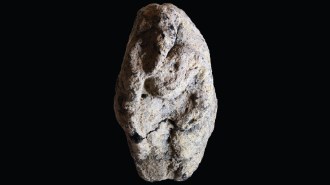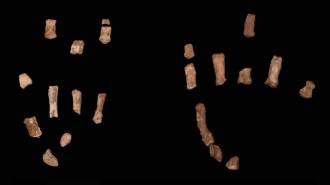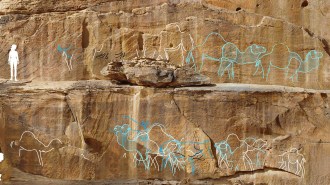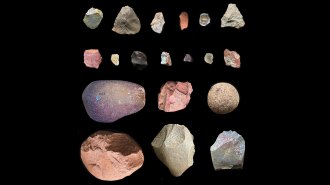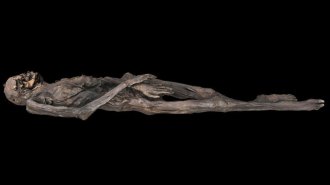People may have lived in Brazil more than 20,000 years ago
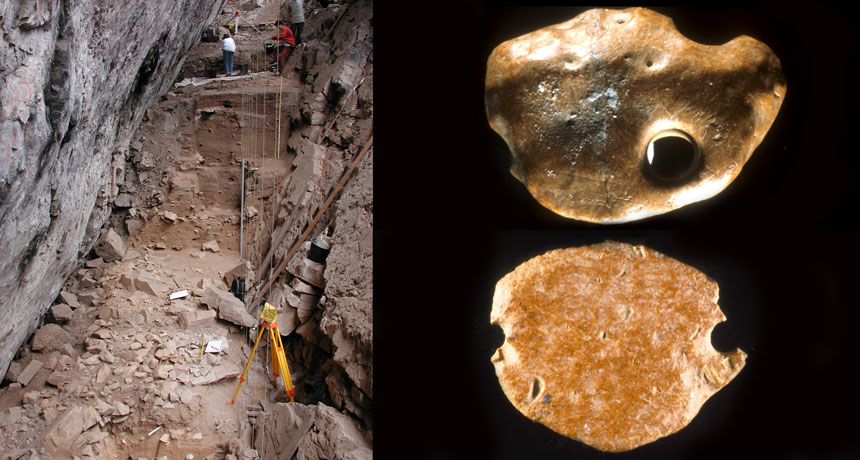
EARLY ARRIVALS Excavations at a Brazilian rock shelter near the center of South America (left) suggest that humans hunted giant sloths there more than 20,000 years ago. Ancient people used some sloth bones unearthed at the site (right, top and bottom) as personal ornaments, based on notches and holes in those finds.
D. Vialou et al/Antiquity 2017

